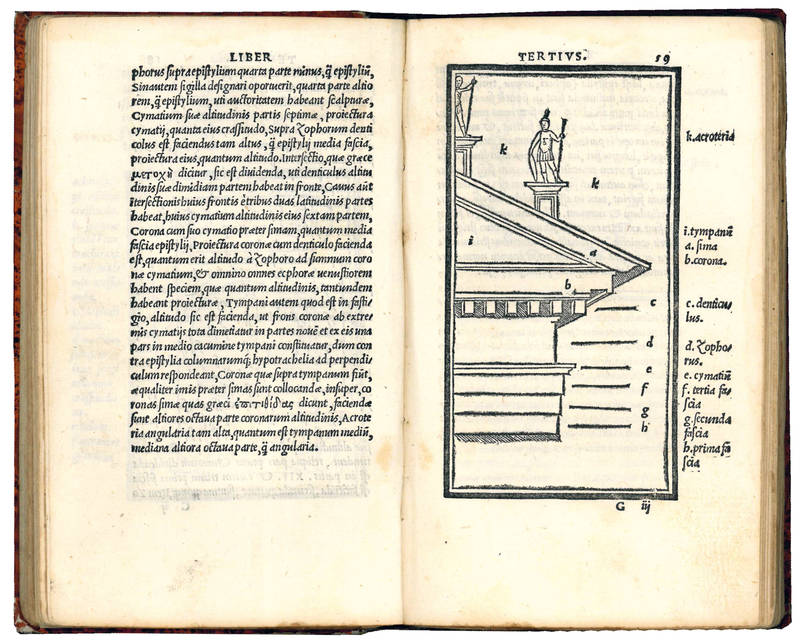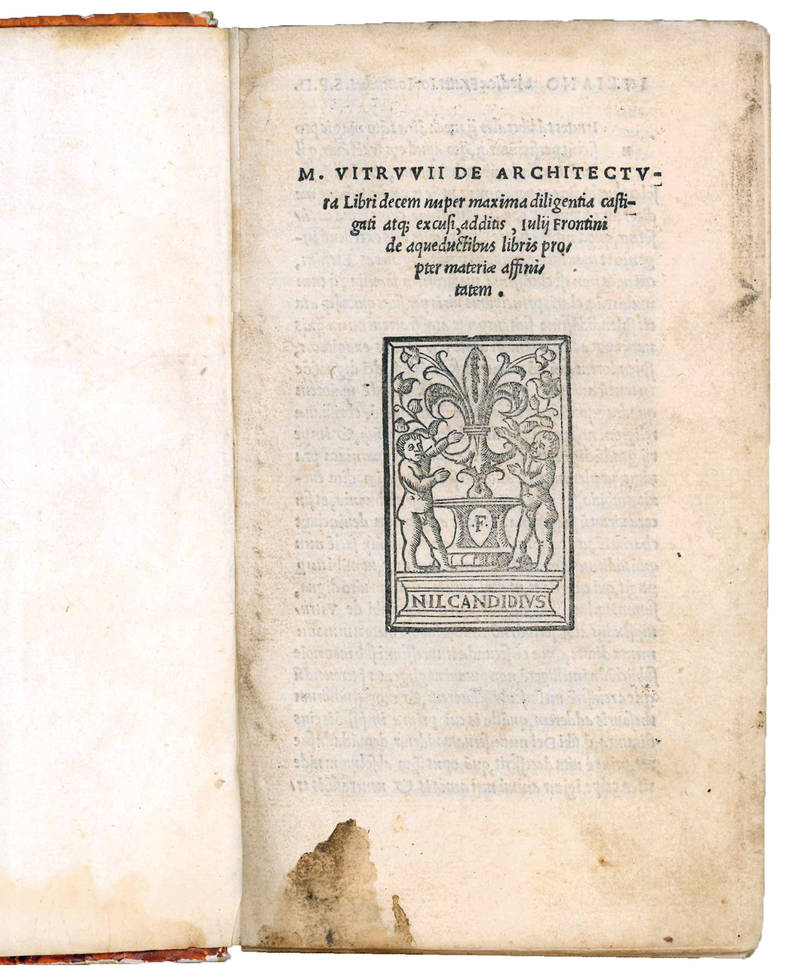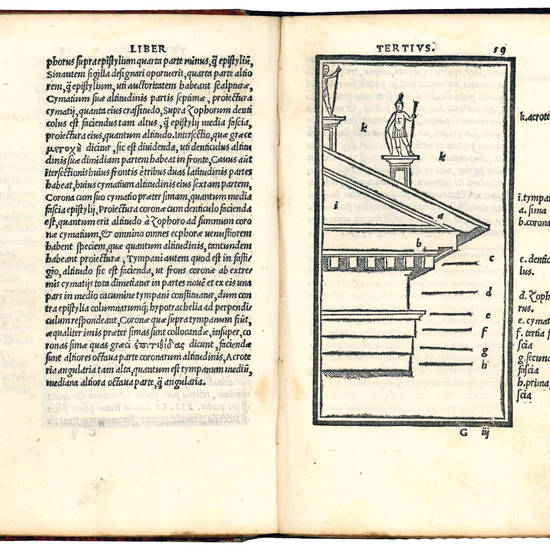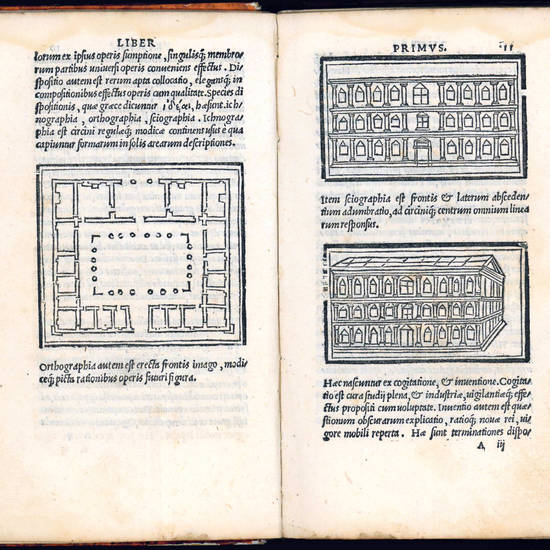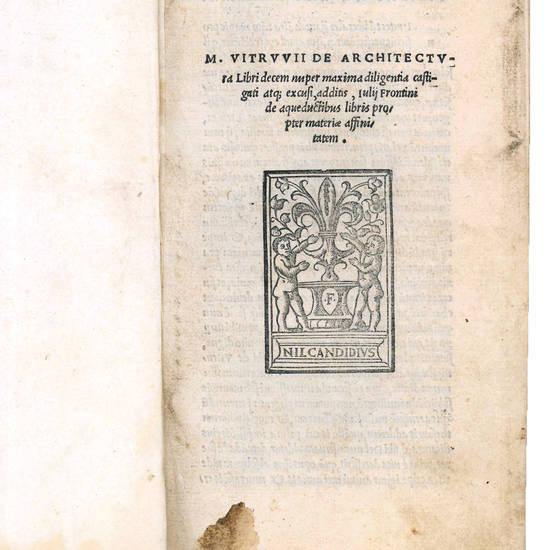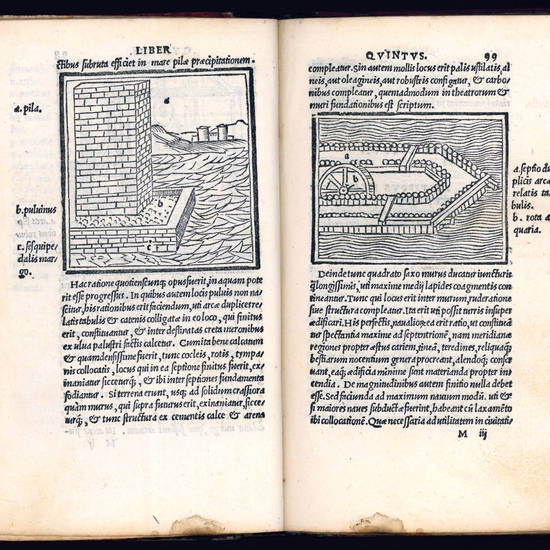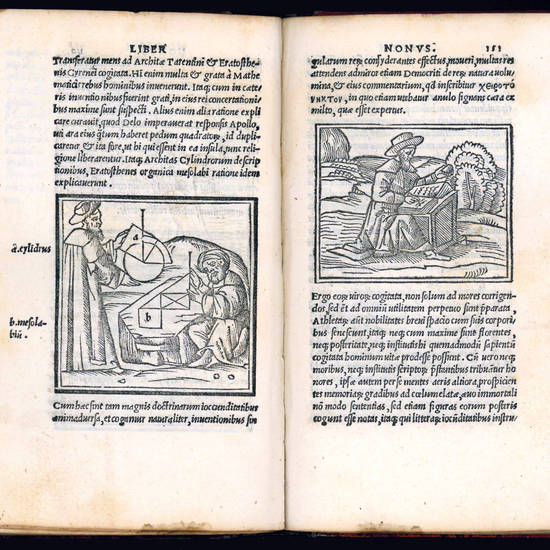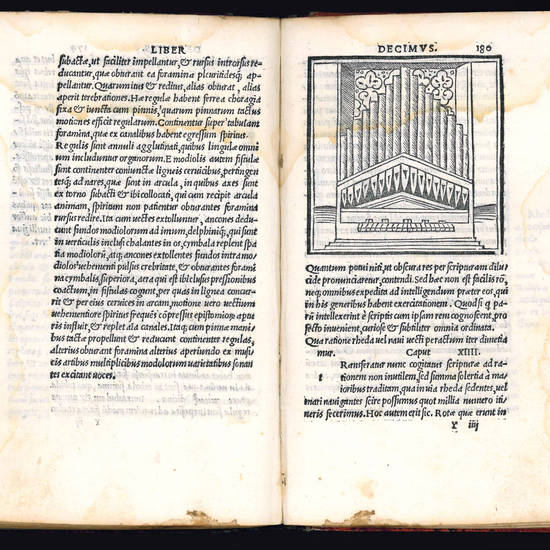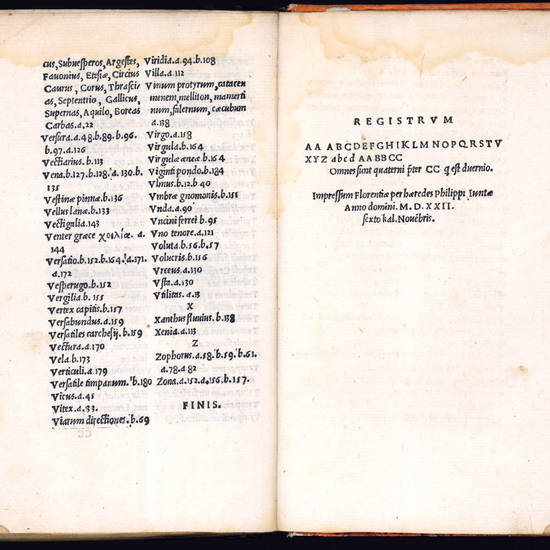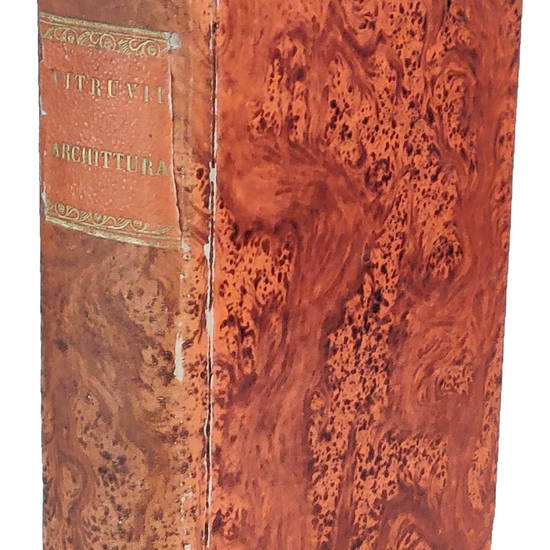M. Vitruvij De architectura libri decem nuper maxima diligentia castigati atque excusi, additis, Iulij Frontini De aqueductibus libris propter materiae affinitatem. Colophon: Impressum Florentiae, per haeredes Philippi Iuntae, 1522 sexto kal. Novembris
Autore: VITRUVIUS POLLIO, Marcus (1st century BC)-FRONTINUS, Sextus Iulius (c. 30-103)
Tipografo: heirs of Filippo Giunta
Dati tipografici: Firenze, 27 October 1522
Three parts in one volume, 8vo (168x95 mm). [4], 4 [recte 5]-192 [but 191], 24, [20] leaves. With many errors in foliation. Collation: AA8 A-Z8 a-c82AA-BB8 CC4. Lacking the blank CC3. The quire K is wrongly signed I. Printer's device on title page and on l. CC4v. The colophon on l. CC2r calls for a quire d that in fact was never printed. Printed in small italic type, spaces left for capitals with guide letters, 140 woodcuts (one repeat) of varying sizes throughout text depicting ground plans, ancient buildings, columned courtyards, ornaments, instruments, machines, diagrams, including the celebrated “human proportion”. 19th-century marbled boards with lettering piece on spine (worn, front joint weakened). Small stain affecting the bottom margin of several leaves, tiny worm track to the upper margin of about 8 leaves (quire L) not touching text, some light staining throughout, all in all a more than decent copy.
This is a new typesetting, in italics, of the second illustrated edition of the De architectura decem libri by the Roman architect Vitruvius, i.e. the 1513 Giunta edition edited by Giovanni Giocondo, with the woodcuts from the same blocks. Errors of the earlier edition are here corrected.
The De architectura decem libri (‘Ten Books on Architecture') was composed between 31 and 27 BC, and is the only complete treatise on architecture to have survived from Antiquity. The work circulated widely in manuscript and was first printed at Rome in 1486/87. The first illustrated Vitruvius was published at Venice in 1511, a large volume issued from the printing press of Giovanni Tacuino and skillfully prepared by the Franciscan friar and competent philologian Giovanni Giocondo (ca. 1433-1515), who was active as an architect and engineer in Naples, Paris, Venice, and Rome.
The Vitruvius' text was then substantially reprinted by Filippo Giunta in 1513, in a volume in smaller and easily portable format: the Giuntina of 1513 is the first book on architecture in octavo size ever printed and opens with Giocondo's dedicatory epistle to Giuliano de' Medici, originally appended to the Tacuino edition (and still present in the 1522 reprint). The Giunta Vitruvius is supplemented with the treatise on aqueducts (De aquae ductu urbis Romae) by Sextus Iulius Frontinus, which also circulated autonomously. Both Giunta editions contain - cut in reduced size - the series of 136 woodcuts of the 1511 Tacuino Venice edition, to which are added four new subjects.
Pettas, 188; Edit 16, CNCE28778; Sander, 7697; Fowler, 396; Berlin Katalog, 1800; Cicognara, 699; Adams, V-904; Decia-Delfiol, 172.
[10836]

